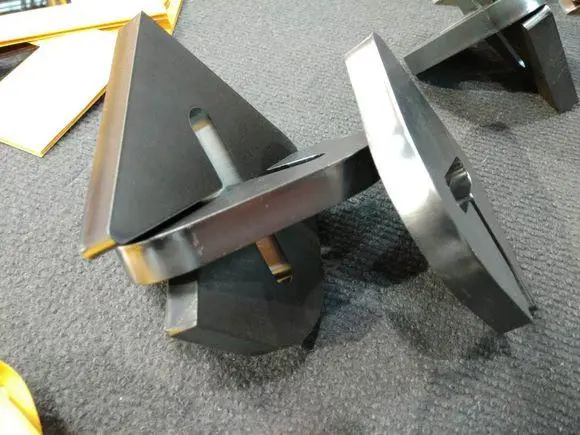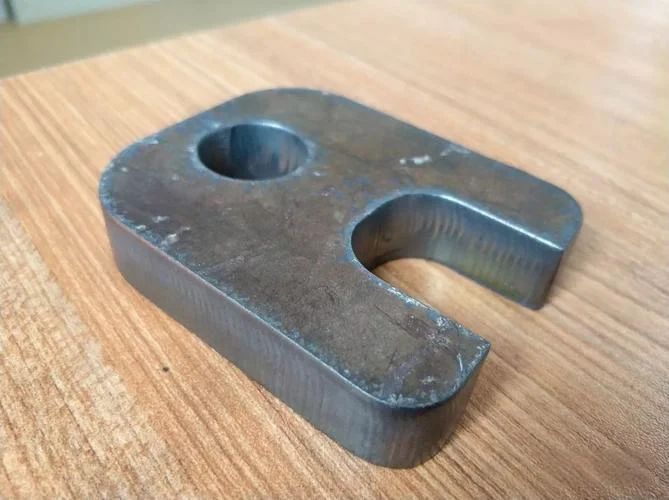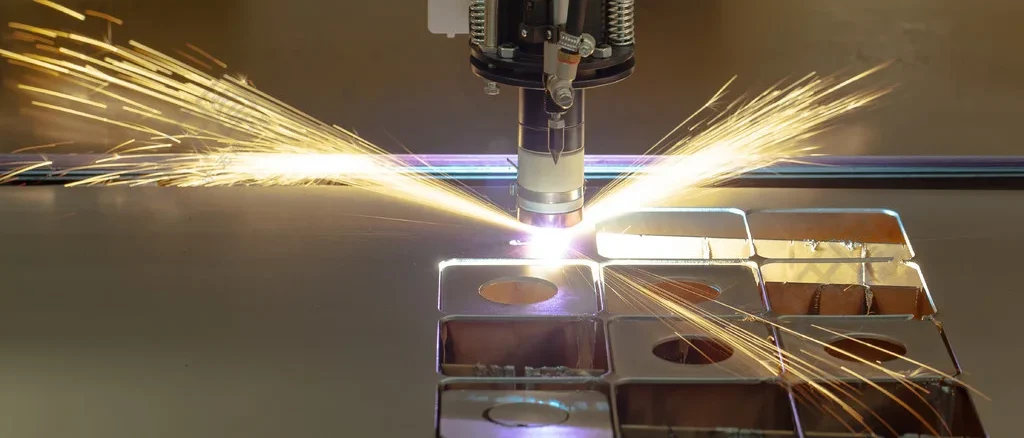What is Plasma Cutting
Plasma cutting is a metal cutting process known for its high speed and efficiency. It involves accelerating plasma to a certain degree to cut metal materials into desired shapes. Plasma is the fourth state of matter composed of highly ionized gas or ions, possessing excellent conductivity and energy transfer properties. During the cutting process, gas is first heated to extremely high temperatures through a process called plasma arc, forming plasma. These high-energy plasma is then focused on the metal workpiece, heating localized areas of the metal to the point of melting or even combustion, thus achieving the cutting purpose. This is the essence of plasma cutting.
History of Plasma Cutting
Plasma cutting can be traced back to the 1950s when the industrial sector sought a faster and more efficient metal cutting method to replace traditional methods like flame cutting and mechanical cutting.
1. In the 1950s, the concept of plasma cutting was first proposed, and scientists and engineers began utilizing plasma to heat metals.
2. By the 1960s, plasma cutting technology had matured, gradually entering commercialization. Engineers developed plasma cutting equipment suitable for industrial production, leading to its widespread application in industries.
3. In the 1980s, with the emergence of computers, automated plasma cutting systems appeared. These systems could achieve more precise cutting through computer control, thereby enhancing factory productivity and product quality.
4. From the 1990s to the present, plasma cutting technology has seen rapid development, with many advanced techniques and equipment emerging. Technologies such as high-energy plasma cutting, multi-axis control systems, and laser-assisted plasma cutting continue to drive advancements in the field.
Why Use Plasma Cutting
Plasma cutting boasts a wide range of applications, suitable for cutting all conductive materials. Its fast cutting speed can reach a maximum thickness of 150mm, and the cut edges are typically smaller compared to other cutting methods. Consequently, plasma-cut pieces exhibit reduced errors and higher quality. Let’s delve deeper into some of the advantages of plasma cutting to gain a thorough understanding of it.
Cutting Speed:
Plasma cutting surpasses the cutting speed of any other method, saving you up to three-quarters of the time and enabling faster, more efficient project completion. Unlike other cutting methods that require preheating, plasma cutting can start cutting operations directly. Additionally, plasma provides high energy, enhancing cutting capabilities.
Applicability:
Plasma cutting finds widespread application across various industries, thanks to its adaptability. It can cut many different types of materials, including metals, plastics, glass, and even different materials stacked together.
Cutting Quality:
Plasma cutting is synonymous with high precision, capable of cutting various complex shapes with exceptional accuracy. Its fast cutting speed and short dwell time on the workpiece reduce heat transfer, thus preventing warping caused by excessive heating. This ensures consistency in the workpiece, minimizing scrap rates and the need for post-cutting reshaping efforts.
Piercing Speed:
Another significant highlight of plasma cutting is its fast piercing speed. Many cutting applications require internal piercing, such as when cutting through a 15mm metal plate using oxygen-fueled processes, which typically necessitates preheating to 100 degrees Celsius for at least 30 seconds. However, with plasma cutting, there’s no need to worry about this issue as it can start piercing directly.
Safety:
Plasma cutting, utilizing inert gases, is considerably safer compared to cutting methods reliant on oxygen. This safety advantage extends to the transportation and replacement of gas cylinders, making plasma cutting a safer choice in those aspects as well.
How Plasma Cutting Works?
The working principle of plasma cutting is indeed quite simple. It involves directing gas through a narrow nozzle to generate an arc. This gas can be air, oxygen, argon, nitrogen, and so forth. During this process, the temperature of the gas rises to the point where it enters the fourth state of matter, known as the plasma state. We are familiar with the other three states of matter: solid, liquid, and gas.
During cutting, since the workpiece needs to conduct electricity, it becomes a part of the entire circuit. This allows the plasma arc to be directed onto the workpiece, causing it to melt and thereby achieving the cutting purpose.
Plasma Cutting Process
Preparation:
1. Gather the workpiece to be cut, the plasma cutting machine, and ensure a comfortable working environment.
2. Ensure the workpiece is securely fixed, plan the cutting path, and ensure there are no obstacles obstructing the cutting path.
3. Inspect the equipment for any abnormalities and ensure it can operate normally, with no safety hazards.
4. Wear your safety gear, such as protective goggles, helmets, gloves, clothing, earplugs, etc., to prevent accidents.
Setting Cutting Parameters:
1. Based on the material type, thickness, path length, and desired cutting quality of your workpiece, adjust the parameters of the plasma cutting machine. This includes selecting the appropriate gas type, flow rate, current, voltage, etc.
2. Failure to properly set these parameters can affect the temperature, cutting speed, and stability of the plasma arc, directly impacting cutting quality.
Begin Cutting:
1. Now, you can start the equipment, but be vigilant about observing the cutting quality, torch speed, and equipment operation. This allows for timely adjustments.
2. Ensure that the cutting quality is good and that the torch trajectory matches the preset without deviation.
3. If any issues arise during cutting, such as poor cutting quality, inadequate melting, or ineffective gas clearance, promptly adjust the equipment parameters, torch position, and cutting speed.
Cleaning and Inspection:
1. After completing the cutting process, shut down the equipment and promptly clean the work area, removing any metal melting residue that may have accumulated.
2. Inspect the workpiece to ensure it meets the expected quality requirements. If necessary, grind or trim any areas that may exhibit defects.
Applications of Plasma Cutting
Plasma cutting’s efficiency, precision, and versatility across various metal materials have led to its widespread application in numerous industries and manufacturing sectors. Here are several key application areas:
1. Metal Fabrication: Plasma cutting finds extensive use in the metal fabrication industry for cutting, drilling, and contouring various metals such as steel, aluminum, copper, etc. It is employed in manufacturing automotive components, aerospace parts, and structural elements for construction.
2. Metal Manufacturing: In manufacturing, plasma cutting is utilized to cut large metal pieces into the required sizes for downstream production processes. This includes cutting sheets, pipes, and profiles.
3. Preparation for Welding: Plasma cutting plays a crucial role in preparing workpieces for welding by removing burrs and rough edges, thus improving the quality of weld joints and facilitating smooth welding operations.
4. Waste Material Processing: Plasma cutting is also used in the processing of waste materials, where it cuts scrap metal into appropriately sized pieces, facilitating the melting of scrap materials for further processing or recycling.
Materials for Plasma Cutting
Plasma cutting can effectively cut almost any conductive metal material. Here are some commonly used materials:
1. Carbon Steel: Commonly used for structural purposes.
2. Stainless Steel: Known for its corrosion resistance.
3. Aluminum Alloy: Lightweight with high strength.
4. Copper and Copper Alloys: Known for excellent conductivity and thermal conductivity.
5. Titanium Alloy: Exhibits excellent strength and corrosion resistance.
6. Alloy Steel: Includes various steel compositions, typically offering high strength and wear resistance.
Plasma Cutting Parts and Example




Plasma Cutting vs. Other Cutting Methods
Laser Cutting
1. Principle: Laser cutting utilizes a high-energy laser beam to heat the material to melting, vaporization, or evaporation, and then uses airflow to blow away waste material from the cutting location, thereby achieving the cutting process.
2. Advantages: Laser cutting boasts high precision, fast cutting speed, a broader range of applicable materials including both metals and non-metals, and the ability to cut many complex shapes.
3. Disadvantages: Laser cutting is associated with high costs, strict environmental requirements, limited thickness for cutting metals, and strong reflectivity of metals towards it.
Flame Cutting
1. Principle: Flame cutting utilizes oxygen and fuel to generate a high-temperature flame, heating the metal to combustion or melting.
2. Advantages: Flame cutting is cost-effective, capable of cutting thick metals, and consumes minimal electricity, making it unaffected by power supply limitations.
3. Disadvantages: It has a slow cutting speed, low precision, and is unsuitable for cutting small workpieces or non-metallic materials.
Waterjet Cutting
1. Principle: Waterjet cutting involves cutting the workpiece with a high-pressure water jet, often supplemented with fine abrasives mixed into the water.
2. Advantages: Waterjet cutting does not produce a heat-affected zone, making it suitable for cutting materials with poor heat dissipation, such as plastics and rubber.
3. Disadvantages: Waterjet cutting typically has moderate precision, high equipment and maintenance costs, and may not yield ideal results when cutting thick metals.
Conclusion:
Compared to the three processes mentioned above, plasma cutting offers advantages that lie between laser cutting and flame cutting. Its cutting speed and precision are better than flame cutting, but the cost is relatively higher. In comparison to laser cutting, plasma cutting has lower costs and is not affected by metal reflectivity.
Future of Plasma Cutting
Plasma cutting, as an efficient and economical cutting technology, is poised for further development in the future to meet evolving demands. Here are some personal viewpoints regarding the future development of plasma cutting:
1. Enhanced Cutting Precision and Speed: Future plasma cutting technology may continue to improve cutting speed and precision by refining cutting heads, optimizing parameters, and introducing advanced control algorithms and sensor technologies to meet the demand for efficient and precise machining.
2. Expansion of Material Applicability: There is potential to expand the range of materials that plasma cutting can process, including various new metal alloys, composite materials, and non-metallic materials.
3. Intelligence and Automation: Plasma cutting can become more intelligent and automated in the future by integrating artificial intelligence, machine learning, and automation control technologies to achieve intelligent, adaptive control, and remote monitoring, thus improving production efficiency.
4. Environmental Protection and Energy Efficiency: Future plasma cutting technology should focus more on environmental protection and energy efficiency by optimizing energy utilization, reducing waste generation, and introducing eco-friendly materials and process technologies to minimize environmental impact.
About EVERGREEN
At Evergreen, we leave no metalwork untapped. We have a multitude of metalworks to offer; ranging from laser cutting, plasma cutting, bending, nibbling, and punching to stamping and welding.
Putting the customer above all, as usual, Evergreen has introduced Metalworks in the most versatile thickness range. On the top, looks aren’t compromised and a fine finishing material is used. Evergreen deals in an extensive variety of welded parts and stamping parts.
Conclusion
In summary, plasma cutting is an economical and efficient cutting technology that can save costs while maintaining high cutting speeds and relatively high precision, thus accelerating the development of your company. However, it’s essential to choose the appropriate cutting process based on your specific needs. For instance, if you require high precision cutting, laser cutting may be the best option for you. Conversely, if precision and speed are not critical, and you aim to minimize costs, flame cutting may be more suitable. In the future, with the integration of technologies like artificial intelligence and automation, plasma cutting is poised for significant development, offering even more efficient and precise cutting solutions for industrial production.
Things You Might Want To Know (FAQ)
What Are the Safety Equipment When Plasma Cutting?
The safety equipment for plasma cutting includes: protective clothing, facial protection, respiratory protection, hearing protection, foot protection, ventilation equipment, fire safety equipment, first aid kit, etc. However, the most important aspect is the safety knowledge training for employees, ensuring they have sufficient understanding of plasma cutting, are proficient in emergency procedures, and possess the ability to handle potential hazards.
Gas Used in the Process
In the plasma cutting production process, several types of gases are typically used:
1. Plasma gas: including nitrogen, oxygen, and air.
2. Shielding gas: commonly nitrogen and argon.
3. Assist gas: such as acetylene, propane, and other combustible gases.
4. Cooling gas.
How thick can a plasma cutter cut?
The thickness of plasma cutting is determined by various factors, such as the type of cutting machine, its power, the design of the cutting torch, the type and pressure of the cutting gas, and more. Handheld plasma cutting machines are suitable for cutting thinner metals, with cutting thickness typically ranging from 1.5 millimeters to 20 millimeters. On the other hand, CNC (Computer Numerical Control) plasma cutting machines can cut thicker materials, ranging from 2 millimeters to 150 millimeters, depending on the power.


